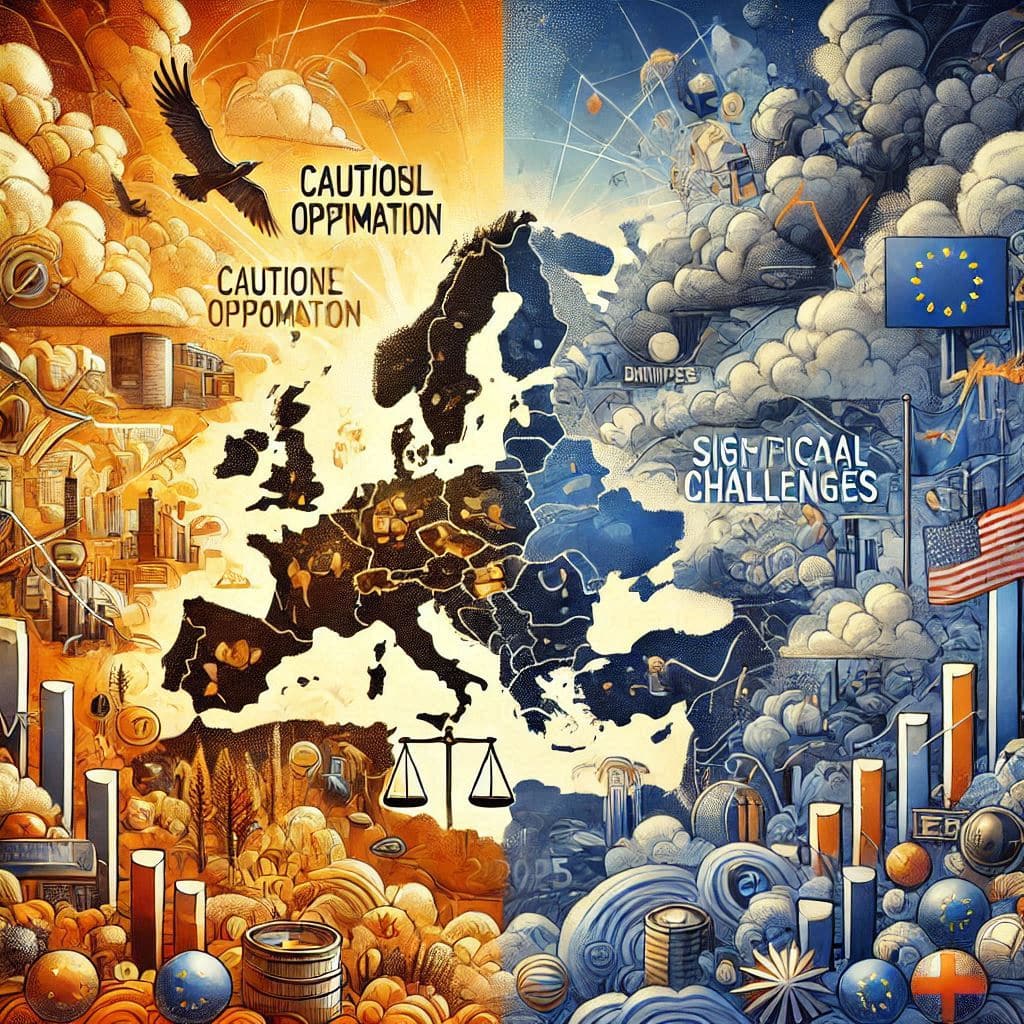„This paper was produced with drafting support Image Creator in Bing and text from Copy.ai.“
Drawing from recent projections and in-depth analysis from reputable sources, I would like to offer insights on the anticipated economic landscape in Europe for the year 2025.
The economic landscape in Europe for 2025 is characterized by a mix of cautious optimism and significant challenges. Here are the key topics shaping this outlook:
The European economy is expected to experience a gradual recovery in 2025, with the European Commission forecasting a growth rate of 1.3% for the Eurozone, up from 0.8% in 2024 [1]. This improvement is anticipated to be driven by strengthening domestic demand and a recovery in consumer purchasing power as inflation declines.
Inflation, a key concern in recent years, is projected to ease significantly. The European Commission expects inflation to decrease from 2.4% in 2024 to 2.1% in 2025 for the Eurozone [1]. This aligns closely with the European Central Bank’s (ECB) target of maintaining inflation around 2%, potentially allowing for more accommodative monetary policy.
Speaking of monetary policy, the ECB is expected to take a more dovish stance in 2025. According to S&P Global, interest rate cuts are likely to be more aggressive than previously anticipated, with the main policy rate potentially reaching around 2.5% by mid-2025 [2]. This shift aims to stimulate economic activity and address concerns over weak confidence levels.
However, it’s important to note that growth projections vary among different institutions. While the European Commission is relatively optimistic, Goldman Sachs projects a more modest growth of 0.8% for the Eurozone in 2025 [4]. They highlight persistent trade uncertainties and fiscal tightening as potential headwinds to growth.
Interestingly, we may see divergent performances within the Eurozone. Spain is expected to outperform its peers with a growth rate of around 2%, while Germany may lag behind with only 0.3% growth [2][4]. This disparity underscores the varying challenges and opportunities across different European economies.
Consumer spending is anticipated to play a crucial role in driving growth. As wages recover and inflation stabilizes, increased consumer confidence is expected to benefit sectors such as retail and tourism [1]. However, it’s worth noting that consumer sentiment remains vulnerable to external shocks, including energy price fluctuations and geopolitical tensions.
Speaking of geopolitical risks, the potential for renewed tariffs under the incoming U.S. administration poses significant uncertainties for European businesses operating in transatlantic markets [4][7]. This situation will require close monitoring as it could significantly impact trade dynamics and overall economic stability in Europe.
Lastly, while short-term recovery prospects are encouraging, it’s crucial to acknowledge the structural challenges facing the Eurozone economy. High energy costs and competitive pressures from global markets like China contribute to concerns about long-term growth potential [4][6].
In conclusion, while Europe’s economic outlook for 2025 shows signs of improvement, particularly in terms of inflation and consumer spending, it also faces significant challenges and uncertainties. Businesses and policymakers will need to remain agile and responsive to navigate this complex landscape effectively.
Sources:
[1] https://www.newslettereuropean.eu/economic-development-in-the-eu-and-eurozone-in-2025/
[4] https://www.goldmansachs.com/images/insights/2025-outlooks/Euro-Area-Outlook-2025-Under-Pressure.pdf
[7] https://www.cnbc.com/2024/12/18/europe-economy-good-times-coming-analysts-say.html










